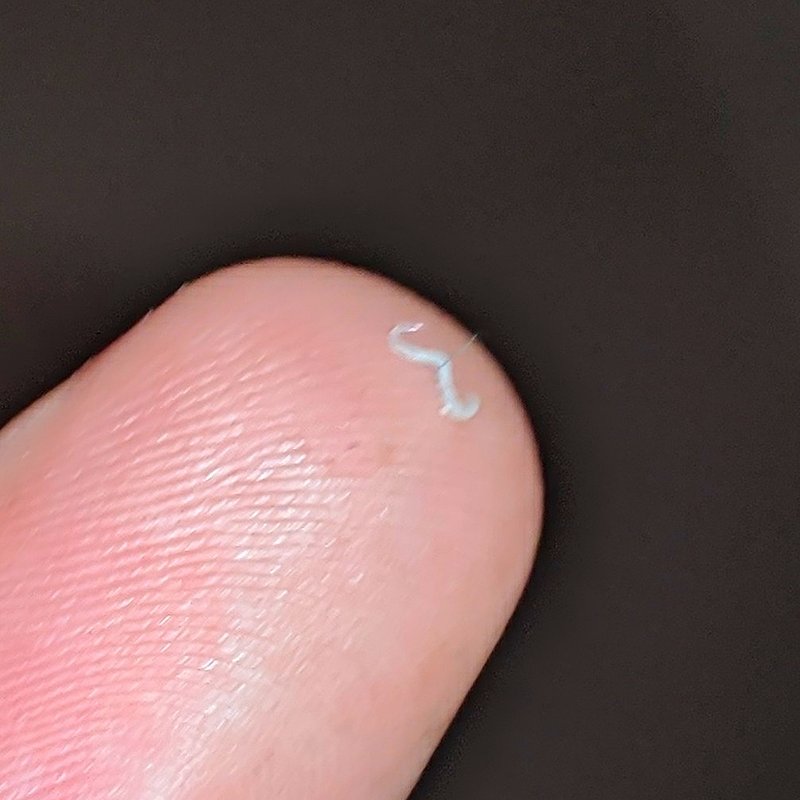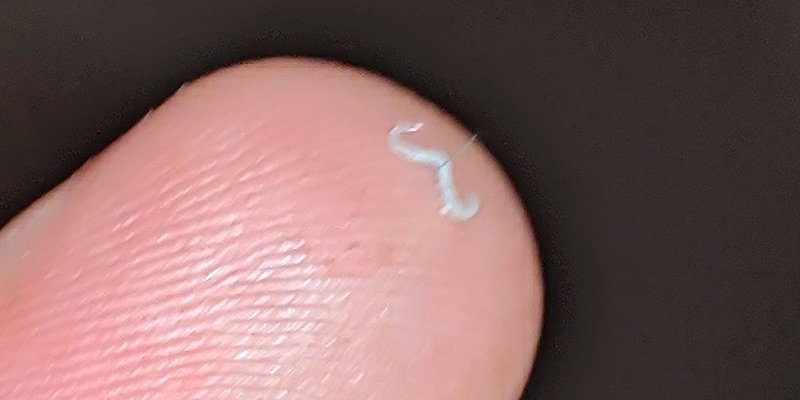
You might think of pinworms as secretive little ninjas that operate under the cover of darkness. They can cause discomfort and a lot of scratching, but they rarely make themselves visible. In this guide, we’ll break down the field identification challenges you might face when trying to figure out if pinworms are the culprits behind that itchy backside—making it straightforward and clear for even the most novice observers.
What Are Pinworms Exactly?
Before we dive into the identification challenges, it’s crucial to understand what pinworms are. Pinworms, or *Enterobius vermicularis*, are small, white, thread-like parasites. They typically measure about 1 centimeter long and are most notorious for their nighttime antics. Most commonly found in children, they thrive in the intestines but primarily make their appearance around the anus at night.
Now, imagine the discomfort they can cause. When a pinworm has matured, a female will lay her eggs around the anal area while you sleep, leading to itching and irritation. The scratching can result in infections or inflammation, adding more woes to the situation. You might be wondering how to confirm their presence, and that’s where the challenges come in.
Identifying Symptoms
Recognizing the symptoms is the first challenge in identifying pinworms. The most common symptom is intense itching around the anus, often worse at night. This itching can lead to restlessness, irritability, or even trouble sleeping—a sign that something’s not right.
Additionally, other symptoms can include:
- Restlessness: Especially at night.
- Insomnia: Difficulty falling asleep due to itching.
- Abdominal pain: Though less common, some may experience discomfort.
- Visible signs: You might spot small white worms in the stool or around the anus.
Here’s the thing: while these symptoms are telltale signs, they could easily be mistaken for other conditions or even normal itching. This overlap makes pinworm identification tricky, especially in kids who might not articulate their discomfort clearly.
Understanding the Lifecycle of Pinworms
Understanding how pinworms reproduce and spread can help you visualize why identifying them is a challenge. Pinworms have a simple lifecycle. It starts when an infected person scratches their itchy anus, then inadvertently transfers eggs onto their hands. These eggs can survive for weeks on surfaces, such as bedding, clothing, or toys.
When another person touches these contaminated surfaces, they can then unknowingly ingest pinworm eggs. The eggs travel to the intestines, where they hatch and grow into adult worms. This cycle can repeat several times, especially in crowded living conditions like daycare centers or schools.
This interconnectedness means that identifying a pinworm infection isn’t just about looking for worms but also understanding their lifecycle and where they might be hiding. It’s like tracking down a ghost—you know it’s there, but where exactly?
Visual Identification Challenges
Now, let’s talk about the visual aspect of spotting pinworms. Pinworms can be challenging to find because of their small size and elusive nature. Often, the most concrete evidence you might have is through visual inspection of fecal matter, but let’s face it—most of us aren’t eager to dive into that.
Whether you’re checking the child’s anus or examining fecal matter, it’s important to look closely at the right times. Pinworms are most active at night, which means you might not see them during daylight hours. After a restless night’s sleep, however, you may find small white worms crawling around the anus or in the feces.
Tip: Using a flashlight at night might help illuminate any signs that could indicate pinworm presence, but even then, the chances of catching a glimpse while they’re moving about can be slim. If only they could wave a little flag saying, “Here I am!”
Using Tape Test Technique
One effective method for pinworm identification is the tape test. It involves using clear adhesive tape to catch any eggs that might be present around the anal area. It’s best to perform this test first thing in the morning before the child bathes or uses the toilet. Here’s how you can do it:
1. Gather your supplies: You’ll need clear tape, scissors, and a well-lit area.
2. Apply the tape: Lightly press the tape against the anal area. Don’t be too rough; the goal is to pick up any eggs.
3. Examine the tape: Place the tape on a piece of white paper and look for any tiny, white specks—those could be pinworm eggs.
While this method is effective, it’s not foolproof. You might not catch any eggs even if pinworms are present, making it a bit like fishing without a guarantee you’ll catch something.
Consulting a Healthcare Professional
If you suspect pinworm infestation, consulting a healthcare professional is always a good move. They can provide guidance, advice, and, if necessary, conduct tests beyond the tape method. A doctor can confirm pinworm presence through stool tests or a more thorough physical examination.
It’s important to approach your healthcare provider with any symptoms, as they can educate you on treatment options. Sometimes, a simple over-the-counter medication can effectively clear the infection. However, it’s essential to ensure proper dosages and follow-up treatments are followed, as pinworms can be persistent.
Prevention and Re-Identification
Once you’ve tackled a pinworm problem, the journey isn’t over! Prevention is key, especially in households with children. Regular hygiene practices can significantly reduce the risk of reinfestation. Here’s what you can do:
- Wash hands frequently: Encourage everyone to wash their hands thoroughly, especially after using the bathroom and before meals.
- Regular laundry: Wash bedding and pajamas regularly in hot water to kill any eggs.
- Cut fingernails: Keeping nails short can minimize the chance of eggs getting trapped under nails.
Even after treatment, it’s wise to monitor for any symptoms. Like those pesky ninjas, pinworms might try to strike again.
Identifying pinworms can feel like hunting for a secret agent in the night. With their small size, elusive nature, and life cycle, it’s essential to stay vigilant and informed. Recognizing the symptoms, utilizing methods like the tape test, and maintaining open communication with healthcare providers will help you manage this common but uncomfortable issue.
Remember, while pinworms can be a nuisance, they are treatable, and with the right precautions, you can reduce the risk of reinfestation. So, equip yourself with knowledge, keep those hands clean, and ensure your loved ones stay pinworm-free!

